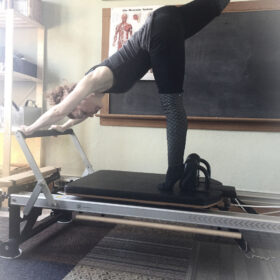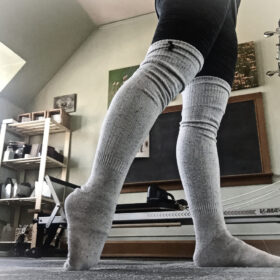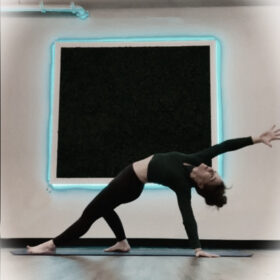There is more wisdom in your body than in your deepest philosophy. ~Friedrich Nietzsche

Pilates
Pilates was created by a man named Joseph Pilates, who didn’t call his work “Pilates,” but rather, “Contrology.” A made up word with control as its base, Contrology as been best described by one of the early practitioners and first generation teachers, Romana Kryzanowska, as “stretch with strength and control. And control is the most important part, because that’s when you’re using your mind.” Said another way, Contrology, aka Pilates, is core strength and joint mobility, with precision, intention.
Born near Dusseldorf, Germany in 1883, Pilates was a sickly child. He became obsessed with health and wellness, and at an early age began his life-long study and practice of all manners of movement available to him: the physical culture of his era, gymnastics, boxing, circus arts, yoga even. In time, he rehabbed his own body, and began working with countless others, and the mind-body method of Contrology began to take shape. After World War I broke out, Pilates was imprisoned for nearly three years in an internment camp while traveling through England with a circus group, where he continued to develop his program until his release. Pilates eventually emigrated to the United states, set up his studio in New York City in a neighborhood near numerous dance studios, where he continued to study, develop his method and put it to practice on dancers, celebrities, and laypeople alike. However, his work wouldn’t reach the level of recognition that he had envisioned, until long after his death in 1967, when many of his students took his work and carried it out into the world.
The original Pilates mat work consists of 34 specific exercises, done in order without any special equipment—just you, a mat and gravity. Apparatus such as the Reformer and Cadillac, as well as others, were developed later, when Mr. Pilates saw that most bodies, when discovering how formidable gravity can be, couldn’t do his mat work. The spring-loaded apparatus was initially designed to help people get stronger on the mat, and by extension, in our upright lives outside the studio, as well as to progressively add resistance to the exercises.
My Pilates training also pulls from various sources: contemporary as well as classical schools and teachers. The more I learn about Pilates, the more I pull away from the noise and chaos of the contemporary world, and gravitate toward the original work of the man himself, Joseph Pilates. There is profound benefit to be found in the art of control, repetition and progressive strength building, at the foundational level from which real Pilates begins.

Restorative Movement
I got better at Pilates, not by doing Pilates, but by quitting Pilates for a few years while I gravitated toward a program called Nutritious Movement, developed by Katy Bowman. I think what first lead me to her ground-breaking work was a Google search about the pelvic floor—Pilates teachers talk about it all the time, but in bizarre, nonsensical language like “engage your pelvic floor like it’s an elevator in a 10 story building, but just to the third floor.” WTeverlastingF? My Google search led me to this article: Pelvic Floor Party: Kegels are NOT Invited, and I was hooked. I devoured every blog post Katy ever wrote, bought all of her books (which now number 8 or 9), and after much hemming and hawing (I was in grad school, had only just barely finished my Pilates training but still felt desperately lacking in so many ways as a movement teacher), I registered for her Restorative Exercise Specialist program. The Nutritious Movement program gave me all the information my mind, body and soul were craving, but did not get in any certification I’d done prior. Like, “why can’t I sit crosslegged?” and “why does forward bending hurt some of my clients’ backs?” and “what’s the deal with barefoot shoes anyway?” and “how can I truly make my core stronger? And my hips stop hurting? and, and and…life changing doesn’t even…

Yoga
I am not a yoga teacher, as it’s a practice that has showed up only recently in my life, but in a short time, it has profoundly impacted my life, and I know that I will be a lifelong student of yoga. A wise teacher recently told our class, it is our holy obligation to share, not hoard, no matter what our experience level is. I feel yoga is the spiritual piece that my soul has been longing for, but my brain decided to take the long, winding, scenic route to get to it. I find the spiritual texts of yoga to be my absolute favorite part; the profound wisdom contained in ancient words brings a calm centeredness to my life that I’ve not experienced before. With my restorative and trauma-informed background, I take a unique approach to practicing and teaching asana—I strive to imbue my practice with grace, kindness and non-judgment. It’s my goal to make my classes truly accessible to all who arrive. I try to let go of preconceived ideas of what a pose “should” look like, and instead, get curious about how it can support and nourish me today, how can I bring an awareness to parts that might be neglected or forgotten, so that all of my parts benefit, not just the parts that I’m already aware of or already “good” at.
